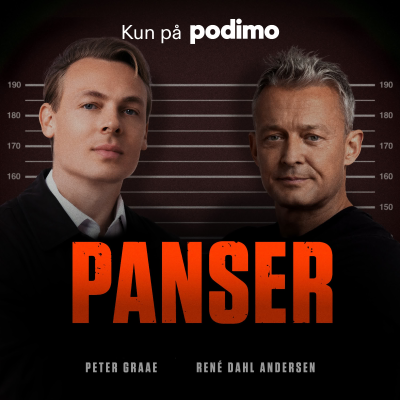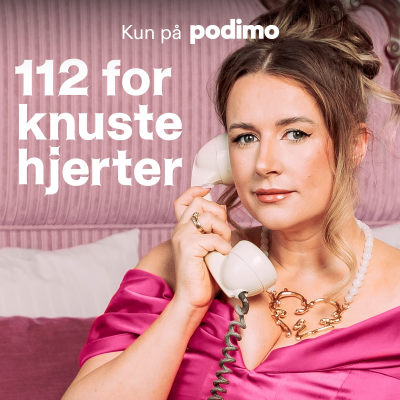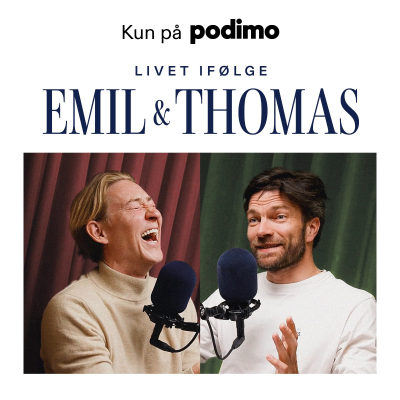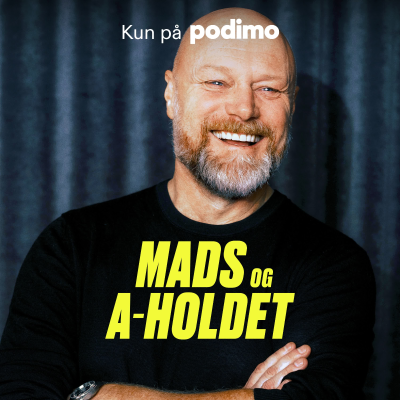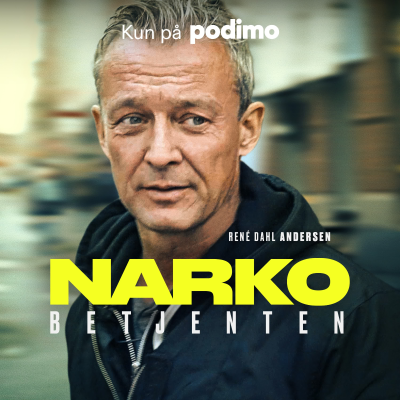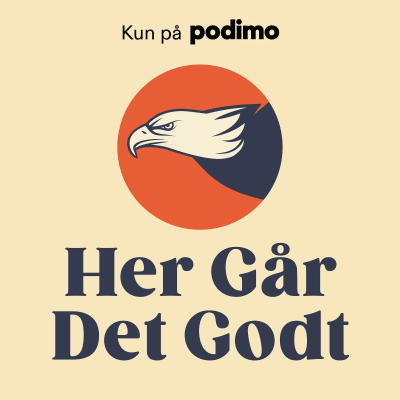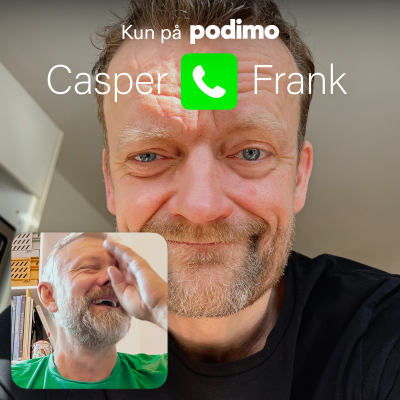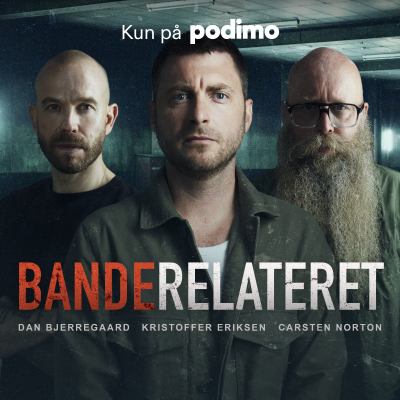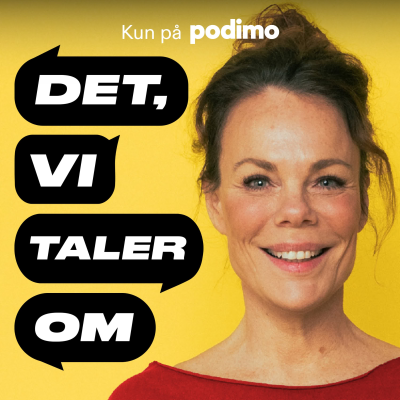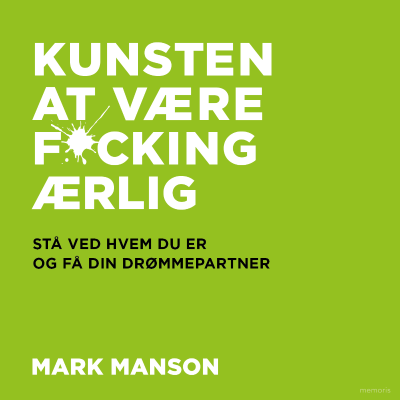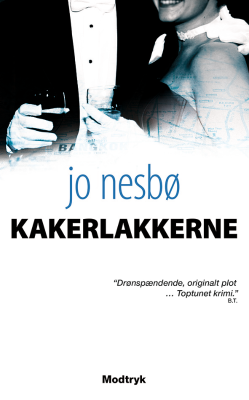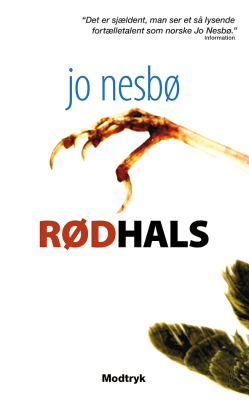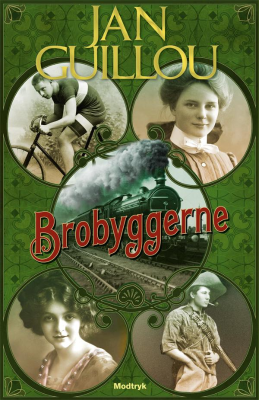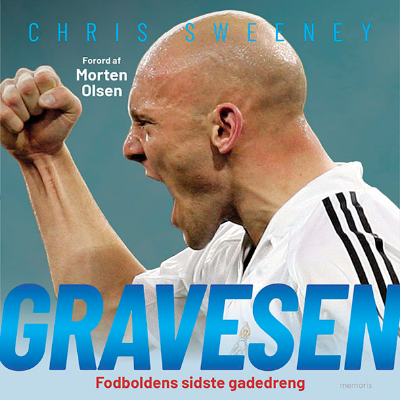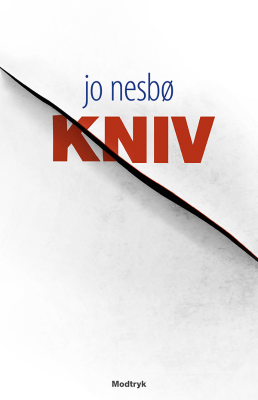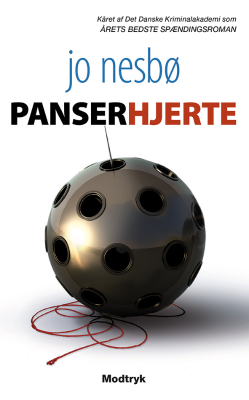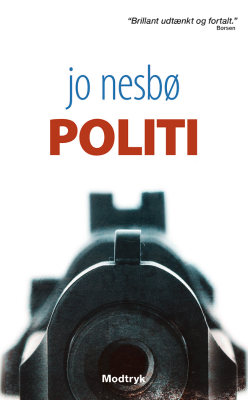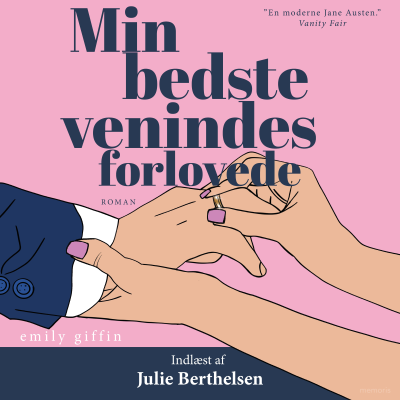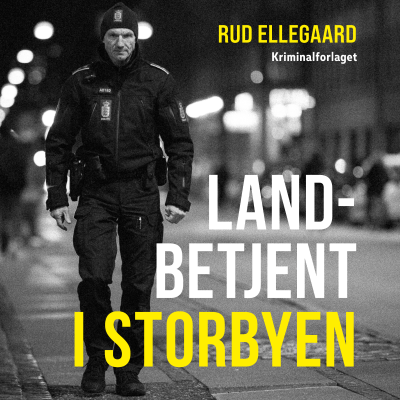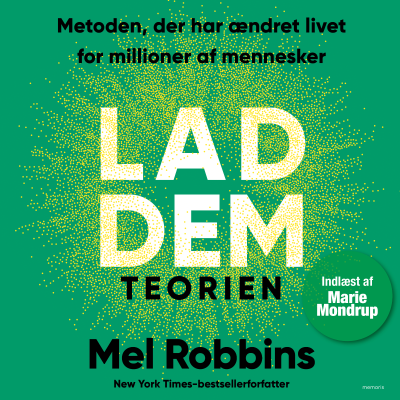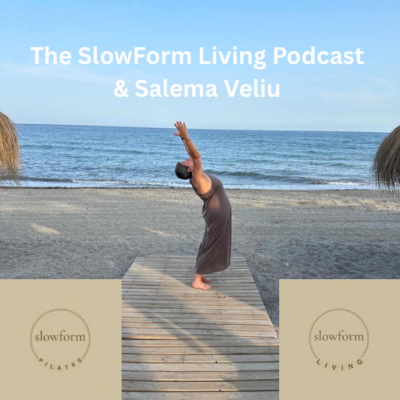
SlowForm Living with Salema Veliu (private feed for salemayoga@icloud.com)
engelsk
Historie & religion
3 måneder kun 9 kr. Derefter 99 kr. / måned. Ingen binding.
Mere end 1 million lyttere
Du vil elske Podimo, og du er ikke alene
Bedømt til 4,7 stjerner i App Store

Læs mere SlowForm Living with Salema Veliu (private feed for salemayoga@icloud.com)
Join me at SlowForm Living to nestle into reflections on life inspired by slow living on the water, my love 4 movement all with a touch of Aussie ease. Expect journalling prompts and movement and meditation practices to help you find your laid back vibe. salemaveliu.substack.com
Alle episoder
57 episoderReset & Reform Your Breath
This Week’s Invitation explores * benefits of breath work on and off the reformer * the neuroanatomy of breath and movement * how breathwork can help challenges of the menopause to support Menopause Awareness Month * a reformer yin inspired breathing practice Lately, after an extremely busy six-month cycle of training in mat pilates, reformer pilates and more recently reformer yin. I’ve found myself in a slower, more introspective state—a kind of personal reform. Moments of pauses along the way have become essential to be able to take all the information in and then more importantly have quiet periods to see how l might fuse all of the elements that l’ve learn’t along the way into a offering/s. October, after all is a season of pausing, reviewing, and gently rebuilding. There’s something powerful about giving yourself the time to catch your breath—literally and metaphorically. I now find myself in a very different place: professionally, mentally, and physically. And truthfully? It feels like I’ve landed in a much better place. That said, the journey hasn’t been without its challenges. There were moments along the way when I found myself holding my breath—not sure what would come next or where exactly I would land. Maybe you’ve felt that too? Of course, movement and meditation have been steady companions. But the one thing that truly anchored me—more than anything else—was breath work. Teaching pranayama as it’s known in yogic circles is something l’ve taught for over two decades but never imagined it would resurface the way it has. Something that feels like second nature to me has to always been starting each session/class of movement with a few minutes of breathing to help ground students in their receptivity. In other words helping them to land in the session without rushing them into the movement and at the end to allow their nervous systems to reset. In a world of constant stimulation we deserve to moments allow ourselves to switch off and go within, this l believe is reflected in our breathing and ultimately how we move and think after. What l found was because l started my reformer classes so differently, people were a bit shocked at first but then after the end of the class, people would come up and thank me for giving them the time to pause before they got moving. I have to say the response has been quite overwhelming and more importantly l am so happy that people are benefitting from doing it. Then as serendipity would have it, l recently came across some old notes from a workshop l taught back in 2018 for stress. These concepts felt deeply relevant to what I was relearning through my Reformer Yin training, and I began to see how I could adapt them directly on the Reformer—an element I’m now weaving into my developing Slowform Reformer Method. Reformer Breathwork in Menopause As l have been reviewing my knowledge of the nervous system in my reformer yin course, l also began to understand the relevance and importance for women in perimenopause, menopause and post menopause. During these periods it is essential to listen to what our body needs (and l’m talking from personal experience) rather than push through. Therefore, finding the right balance between our yang and yin energy when we move is key to a smoother pathway through this life transition. The main purpose of breathing techniques are to help shift the body into a more restful state—supporting the calming influence of the parasympathetic nervous system on the heart, lungs, and digestive organs. Reconnecting with your breath can be a powerful tool for navigating some of the challenges that often arise during menopause, including: * Insomnia:Practicing rhythmic, calming breathwork throughout the day helps regulate your nervous system, making it easier to fall asleep—and stay asleep—at night. Better sleep means deeper rest, more energy, and improved emotional resilience the next day. * Pelvic Floor Dysfunction:Diaphragmatic breathing engages and strengthens the deep core and pelvic floor muscles. Understanding the connection between the breath and pelvic floor movement can improve coordination, support bladder control, and enhance overall pelvic health. * Hot Flushes:Slow, controlled breathing has been shown to ease the intensity and frequency of hot flushes, helping you feel more grounded and in control when they arise. * Weight Gain & Cravings:Breath-led practices can support digestion by gently stimulating the organs and promoting movement through the gut. When combined with better sleep (a natural benefit of regular breathwork), you’re also less likely to reach for quick-energy foods or sugar-heavy snacks. Simply this is why breathing correctly helps during menopause. Hormonal shifts during menopause (especially oestrogen + progesterone) affect mood, sleep, energy & stress levels. Your breath directly influences your nervous system — helping you move from survival mode to a state of calm. * Down-regulate your stress levels * Reduce cortisol levels * Support your body through menopause Breath is a tool you already have —so why not use it wisely? Neuroanatomy of Breathing - How our nervous system works and how it serves us Our Autonomic Nervous System (ANS) regulates involuntary bodily functions like heart rate, digestion, respiration, and more. It has three main branches: * Sympathetic Nervous System * Known as the “fight or flight” response * Activates the body during perceived threats or stress (increased heart rate, dilated pupils, suppressed digestion) * Parasympathetic Nervous System * Known as the “rest and digest” system * Promotes relaxation, digestion, and recovery (slows heart rate, stimulates digestion). When we activate the parasympathetic system, the body slows, softens and begins to recover — cortisol lowers, digestion improves, heart rate eases. * Enteric Nervous System * Often called the “second brain” * A complex network of neurons embedded in the gut * It operates largely independently and manages digestion, but also communicates closely with the brain (via the vagus nerve, for example) It is also worth considering that both PSNS and SNS both send signals to many organs within the body. And did you know * The Enteric Nervous System contains over 100 million neurons—more than the spinal cord. While it’s part of the autonomic nervous system, it’s sometimes considered a separate entity due to its semi-autonomous functions and impact on emotions, mood, and even cognition (via the gut-brain axis). Thats why in every Reformer class I teach...We begin and end with conscious breathing. This balances the nervous system and sets the tone for your practice.Post-session, it brings the body into recovery mode — which is where the adaption, strength, balance and healing actually happen.Therefore, there should always be a moment of rest at the end of every session.Not just to catch your breath — but to allow the nervous system to integrate the work you’ve done. For example, when you rush straight out of class, you skip this vital recovery phase.Your brain, heart, gut and skin will thank you for taking that extra minute to pause.In this Menopause Awareness Month, let breath become your daily tool for strength, balance, and resilience — on and off the reformer. Get Your Reformer Glo on - How Breathwork Can Support Healthy, Radiant Skin And if thats not enough to champion why you should be paying more attention to your breath here’s another reason! It helps your skin. * Boosts CirculationDeep breathing increases oxygen flow, which nourishes skin cells and promotes a healthy, natural glow. * Reduces Stress-Related Skin IssuesActivating the parasympathetic nervous system can help calm inflammation, reduce breakouts, and ease conditions like eczema and psoriasis. * Improves DetoxificationConscious breath supports lymphatic drainage and efficient removal of toxins, reducing puffiness and dullness. * Enhances Sleep QualityBetter sleep through breath regulation allows the skin time to repair and regenerate overnight. * Balances HormonesBreathwork helps regulate stress hormones (like cortisol), which in turn supports clearer, more balanced skin. * Hydration + ElasticityImproved oxygen uptake encourages better nutrient absorption and moisture retention at a cellular level. Reformer Yin Inspired Boxed Breath Pranayama Practice on or off the reformer Here is one l practice a lot in my 1-2-1’s and group reformer classes Boxed Breathing (Box Breath) Practice Box breathing is a powerful, calming breathwork technique used to reduce stress, improve focus, and support the nervous system. It’s simple, grounding, and great for beginners or experienced practitioners alike. 🔲 Imagine drawing a box with your breath. Each side of the box is a 4-count phase: Try it now: Guided Box Breath Practice * Inhale slowly through your nose for 4 counts * Hold your breath for 4 counts * Exhale gently through your mouth for 4 counts * Hold again for 4 counts Repeat for 4 rounds, and notice how your mind and body begin to soften. Repeat the cycle for 3–5 minutes, or longer if it feels good. To explore and find out more about Barre Body’s Reformer Yin training use the code AFFILIATE50 to receive $50 off any training at checkout! If you’re ready to elevate your practice, click the link below! REFORMER YIN TT [https://training.barrebody.com.au/] Find out more about my slowform approach to reformer classes slowform reformer classes [https://linktr.ee/salemaveliu] I finish with one of my favourite poems (by me!) Unfolding Your Myth Light mirrors life Reflecting back what we have chosen to ignore Uncovering undiscovered depths We find ourselves Answering enquiries through a different lens Helping us breathe again Into a new experience we go Not knowing what lays ahead or which way to go Breathing again Somehow finding the path Illuminating forgotten insights and depths A reminder of all that has been and what yet awaits Breathing again We unfold our own myth Thank you for being here, reading, listening and sharing my work. I hope you may benefit in some way from the insights and practices provided to help you navigate your personal and life’s ever changing landscape. SlowForm Living is inspired by slow living on the water, my love 4 movement all with a touch of Aussie ease. Expect journalling prompts and movement and meditation practices to help you find your laid back vibe. Providing various insights from science, nature, zen & various philosophies to help heal and inspire longevity along the way. All of this coming to you from my floating lodge on the water in Cambridge, England. SlowForm Living with Salema Veliu is a reader-supported publication. To receive new posts and support my work, consider becoming a free or paid subscriber. buy me a coffee/donation [https://ko-fi.com/nourishingrealitywithsalema#] 2 Restacks [https://substack.com/note/p-157627193/restacks?utm_source=substack&utm_content=facepile-restacks] Thank you for subscribing. Leave a comment [https://salemaveliu.substack.com/p/reset-and-reform-your-breath/comments?utm_medium=podcast&utm_campaign=CTA_5] or share this episode [https://salemaveliu.substack.com/p/reset-and-reform-your-breath?utm_source=substack&utm_medium=podcast&utm_content=share&action=share&token=eyJ1c2VyX2lkIjoyMTYzMjU1MSwicG9zdF9pZCI6MTc1NDI1MDE2LCJpYXQiOjE3NjM1Nzk5MjksImV4cCI6MTc2NjE3MTkyOSwiaXNzIjoicHViLTIyNDM3NjgiLCJzdWIiOiJwb3N0LXJlYWN0aW9uIn0.4902gKgPbh74v-1vG_SNFlWW5mLlnf3boISE7izV3q4&utm_campaign=CTA_5].
Surfing the Waves Back Home: Reset, Reform, Return
Nosara, Costa Rica - Blue Spirit Retreat DEC 24 Welcome to SlowForm Living where l nestle into reflections on life inspired by slow living on the water, my love 4 movement, all with a touch of Aussie ease. Expect inspiring reflections, journalling prompts and movement and meditation practices to help you find your laid back vibe It’s been a while since we last met. Much has changed, many reflections, big changes, and deeper insights have all been a theme for me since DEC 24. A real turning point for me, not just in terms of change, but in alignment—body, mind, and spirit in the way that they began to speak the same language, so l listened. During this transitional time, l took my cues from being on the water, watching and being more presence with the ebb and flow of the current, the current of change and cycles. Appreciating the ride of the past, but also on the look out for the next big wave to surf and the pauses in between to listen. As I grow older, I find myself reflecting more on the experiences I've lived, the influences that shaped me, and the inspirations I've acted upon—all of which have led me to this moment, l realise. I’m grateful to have lived my dreams and accomplished far more than I ever imagined, even when faced with seemingly impossible odds. I take pride in my journey—from training and teaching the London circuit, to traveling the world, leading retreats and events. Filming with online platform Grokker. On Retreat in Morocco On Retreat in Morocco Teaching on the top of the EMI Music building in LONDON (one of my regular and favourite gigs. Teaching at The Shard - London Teaching at The Shard - London Eventually, leading me to find a home at the original TriYoga London, where I served as a resident teacher for over a decade. Working alongside the incredible Elena Brower since 2015 sparked another phase of profound growth, both professionally and personally. My teaching style and vibe have since been featured in amazing publications, podcasts, platforms, events, and collaborations. Teaching at the YOGA SHOW - London Teaching at Lululemon, Kings Road, Chelsea - London Then, Covid hit. In the second wave of the pandemic, I found myself questioning if I would ever reconnect with the person I once was—my style, my vibe, which somehow seemed lost. On top of that, navigating through perimenopause, I realised that I needed a profound change, both mentally and physically. With the unwavering support of my partner, I began to make progress. The universe, in its mysterious way, conspired to bring forced changes and unexpected opportunities, manifesting through chance encounters and meaningful connections. Slowly but surely, I was finding my way again. Returning almost full cycle in the process, as l found myself drawn to practicing pilates again, which is where l first started a transformation. Back in the day one of my teachers and friends, was a pilates and yoga teacher and l can’t tell you how much learn’t from her - invaluable. As l practiced more, l was observing all the time, from the hands on adjusts to her cueing and eventually became her assistant in her yoga classes. While l had never thought then about becoming a Pilates teacher and l had thought and with her encouragement to study and become a yoga teacher, which l went on to achieve. All my training to date had given me access to some amazing well respected global teachers who continue to inspire me and fuel my passion for functional and creative movement as well as practices in philosophy and meditation for my exploring mind. Teaching part-time while working l eventually gave up my main career (which was a good one at British Airways) l took a leap of faith and set up my own business teaching and coaching in London (which was hugely successful by the way!) Reminding me that when one door closes, another opens…… Movement is a form of not only functional but creative expression. Returning home to this form - pilates, this time around has been and is different. Pilates helped me realise that it is ok not to have the same form/body and what l could do with it before. So l set out on another journey of self discovery towards building longevity, strength and resilience gracefully in a different way through a different lens, it’s taken a while but this is what happened to me along the way. At the beginning of the year while restarting a regular Mat Pilates practice, l started going to Reformer Pilates and absolutely loved it. Why? Because it was something new but also at the same time it reminded me of my early days learning Iyengar Yoga. From Iyengar’s hands on adjust to the cueing, l began to see a lot of similarities between Iyengar and Joseph Pilates so l was curious. The more l practiced the more l could see and feel that this is what my body needed in this cycle of my life and l am eternally grateful to Paula who was my very first reformer teacher for showing me the ropes (so to speak!). Deciding to retrain in another modality Mat Pilates back in May, was one of the best decisions l made this year, which was to become a catalyst. The journey continuing with another amazing teacher Naomi De Fabio later in June this time training in Reformer Pilates in London. Being back in South London and around Chelsea, Camden and Primose Hill really brought back a lot of happy memories of the life l had in London, before l moved just before the pandemic hit. Seeing some familiar faces along the way, coupled with being able to go the launch of HOME in Primose Hill, a new pilates and yoga studio opened by the formidable Jonathan Sattin (the original owner of TRIYOGA). Opening on the original site of the old TriYoga Primose Hill some fifteen years earlier, it was quite emotional to come home to where it all started, where l got my first big break onto the London and global scene. Now as l move forward along this new pathway, l am working with Barre Body in Byron Bay, in Australia in the Art of REFORMER YIN with the incredible Sam Sales, which l’m looking forward to sharing some insights with you as we move through the next few months online and in person. On the path…… Always having been one with many creative ideas, carving out my own vibe and style as l’ve gone along life’s path. l was on the look out to find a new home for my style, my vibe- the authentic me, to teach without having to be put in a box, so to speak and being told what to teach and how to look? Enter The Ness Club….. A reach out on social media, instigated a conversation, instigated a meeting, instigated an amazing offer with support and respect for my experience and who l was. I was being seen again. An older teacher, one that doesn’t conform to stereotypes. But knows who and what she is and relishes in that energy. How refreshing. The real reset has begun. And more importantly, it helped me remember why l started…… What a blessing. Returning to my authentic self this time around has meant fully embracing my laid-back vibe and style, deeply influenced by my travels, especially in Australia. The Aussie ease of living and being—my true element—has shaped the way I live. Although the weather here in Cambridge may not quite match the sunny shores, I've managed to recreate that same connection to water. It’s where I choose to live—by, next to, and on the water. SlowForm Living with Salema Veliu is a reader-supported publication. To receive new posts and support my work, consider becoming a free or paid subscriber. Thank you for subscribing. Leave a comment [https://salemaveliu.substack.com/p/surfing-the-waves-back-home-reset/comments?utm_medium=podcast&utm_campaign=CTA_5] or share this episode [https://salemaveliu.substack.com/p/surfing-the-waves-back-home-reset?utm_source=substack&utm_medium=podcast&utm_content=share&action=share&token=eyJ1c2VyX2lkIjoyMTYzMjU1MSwicG9zdF9pZCI6MTcxODY3MjQ3LCJpYXQiOjE3NjM1Nzk5MjksImV4cCI6MTc2NjE3MTkyOSwiaXNzIjoicHViLTIyNDM3NjgiLCJzdWIiOiJwb3N0LXJlYWN0aW9uIn0.AiY2SBpRs-_RnGqgoTBgBDIXSXNH4dgS8XoETfpJ8RA&utm_campaign=CTA_5].
Pilates Meets Zen: Prana, Precision & the Focused Path to Flow in Life
Your Invitation to Nourishment this week * A set of embodied prompts to help you return to centre — physically, emotionally, and energetically. Grounded in Pilates precision and Zen simplicity, these reflections guide you to: * Embrace precision as a pathway to clarity and confidence, not perfection. * Refine your focus to cultivate presence in movement and daily life. * Prāṇa Activation Practice to Center & Circulate energy. * Explore a Zen-inspired approach to showing up with sincerity, simplicity, and presence. A gentle call to notice where your energy is going, how your intentions shape your actions, and how nourishment and healing begins by listening and tuning within. To be honest, this is the first real moment I’ve had to land since returning from my recent trip to Spain. After weeks of planning, studying, travelling and teaching, I’ve finally allowed the words to arrive — not forced, just gently welcomed. AumYogaMarbella [https://aumyogamarbella.com/classes/] I’m writing this on the evening of the Summer Solstice, the longest day of the year, from my quiet spot by the water here in Cambridgeshire. There’s a warm stillness in the air where various Dragonflies and paddle boarders skim the surface. The light lingers a little longer — an invitation to pause, breathe, and receive. May was both generous and genius — full of life, momentum, a few bumps, yes, but also breakthroughs. Since April, a quiet energy has been building — a re-focus, a reset, and perhaps most importantly, a renewed belief in myself and my path. Working alongside Elena Brower and our Hive consort has offered a grounded space for deep directionality — a word I’ve come to love — paired with clarity and spaciousness. That work was soon followed by my Mat Pilates certification, and now I find myself preparing for the next step: heading to London this week to begin Reformer training with the wonderful Naomi De Fabio. It’s been a season of authentic connections, unexpected openings, and the sweet surprise of my coaching practice quietly rebuilding itself — proof that we never truly start from scratch when we move from the centre. One of the core principles of Pilates is centering — the idea that all movement begins from a strong, stable centre. Not just physically, through the core and deep postural muscles, but energetically and mentally too. To be centered is to return to your source of strength.To know where you move from — and why. In Pilates, we train this with focus, breath, and intention. We return to the centre not to control, but to cultivate calm, clarity, and direction. Whether on the mat or in life, when you're centred, your movement becomes more meaningful, more aligned — and ultimately, more free. And when combined with precision, this becomes a kind of embodied meditation. A daily practice of remembering and refining. So what does all of this have to do with Prana, Precision, Focus, and Flow, you ask? Everything. These four elements have been the quiet threads woven through every endeavour that’s felt aligned, easeful, and purposeful. And the times where things haven’t flowed? I can honestly say one or more of those elements was missing. Returning to Pilates has taught me the beauty of precision — not to strive for perfection, but to move with intention, clarity, and awareness. A core principle of the method is control — not in a rigid way, but in a way that honours the relationship between breath, movement, and mind. Just last week, after covering a Pilates class, a student approached me and said: “I just wanted to say how helpful it was the way you explained the breath. It was so precise and supportive — it helped me feel more in control.” I smiled, surprised. I wasn’t sure what I had said differently. But it reminded me: people feel when you are present — when you’re focused. And then, during a mat class this week, the teacher mentioned my concentration, noting how “tuned in” I seemed. Again, a simple reflection, but one that echoed something deeper I’ve been exploring: * Where we place our focus, our energy flows. * When we move with precision, we create presence. * And when we honour the breath — our life force, our prana — we align with a deeper intelligence within us. In Sanskrit, prāṇa (प्राण) means "life force" or "vital energy." Breath is its vehicle: While breath (vāyu or shvāsa) is not the same as prāṇa, it's considered the main carrier or expression of prāṇa in the physical body. In yogic, Ayurvedic, and energetic systems (like traditional Chinese medicine's qi), breath and prāṇa are intimately linked, but not identical. * Breath is the tangible expression. * Prāṇa is the subtle force behind it Prāṇa Activation Practice: Center & Circulate Purpose:To awaken and circulate prāṇa through intentional breath, focus, and subtle movement. This practice calms the nervous system, strengthens internal awareness, and reconnects you with your energetic centre. Step 1: Ground & Centre (2–3 mins) * Come to a comfortable seated position (on the floor or a chair). * Rest your hands on your belly or heart. * Close your eyes gently. * Begin to follow the natural rhythm of your breath. * Soften your jaw, shoulders, and forehead. Whisper to yourself: “I am here. I am centred.” Step 2: Breath + Awareness (3–4 mins) * Inhale slowly through your nose for a count of 4, expanding the ribs sideways and back. * Exhale gently for a count of 6, softening your belly and jaw. * Visualise the breath as light or energy moving in through the nostrils and gathering at your centre (solar plexus or heart). * With each exhale, imagine tension melting and clarity rising. Breath in — I draw in life force.Breath out — I release what’s no longer needed. Step 3: Subtle Prāṇa Flow (3–5 mins) * Inhale: Sweep your arms up overhead as if drawing energy upward. * Exhale: Float your arms down as if moving through water, imagining you're spreading calm energy through your body. * Repeat 5–7 rounds with intention. * Keep the breath smooth and focused. Tip: This movement can be done seated, standing, or even lying down with just the arms and breath. Step 4: Seal the Practice (1 min) * Place your hands over your heart or navel. * Whisper silently: “I honour the breath. I return to centre. I move with purpose.” Pilates Integration: Ab Prep with Breath-Focused Flow Purpose:To deepen core awareness, coordinate breath with movement, and connect with the energetic centre (solar plexus), supporting clarity, calm, and grounded flow. AB PREP with Prāṇa Awareness * Lie on your back (supine) in semi-supine position: knees bent, feet flat, pelvis neutral. * Arms by your sides, shoulders relaxed, spine long. * Lightly place hands behind the head (elbows just in view) or rest them on your thighs for support. * Inhale: Expand the ribcage wide and back into the mat. Feel the breath circulate through the whole torso. * Exhale: Draw navel gently to spine. Float the head, neck, and shoulders up in one smooth line — gaze toward the thighs. Keep the pelvis and legs stable. * Pause: Hold for 1 breath. Feel energy centered in the core — steady and alive. * Inhale: Lower back down with control, maintaining length in the spine. Repeat 6–8 reps, syncing each one with a full, intentional breath. To progress: On your final rep, float your arms overhead as you inhale and slowly sweep them down by your sides as you exhale, echoing the Subtle Prāṇa Flow from your practice. From a Zen perspective, this is the very heart of practice:Noticing. Attuning. Returning. Using Zen practically invites us to show up fully in the moment — whether we’re washing the dishes, walking across the room, or cueing a movement. It teaches us that mindfulness doesn’t need incense or chanting (though those things can be beautiful), but rather the commitment to presence, again and again. As Zen master Dogen once said: “To study the way is to study the self. To study the self is to forget the self.” When we bring precision and presence into our daily actions, we disappear into the experience — the ego softens, and we move into flow. The doing becomes the being. That’s what happened today, while writing this. The water held the moment. The wind moved just enough. The words came. So, now I invite you to reflect on the following prompts: * Where is your focus right now? * Are you moving with precision or rushing to the next thing? * Can you invite more prana, more presence, more spaciousness into your flow? * Are you connected to your centre — your source? * Can you move through life with more intention, focus, and breath? * What would happen if you let precision be an anchor rather than a burden? * How might flow arise naturally when you let yourself be fully here? These reflections aren’t simply journal prompts — they’re embodied invitations. Part mindful inquiry, part movement meditation, they’re designed to help you return to your centre with presence and clarity. Rooted in Pilates precision and Zen awareness, each prompt gently encourages you to explore your inner landscape through the body — to notice where your energy flows, how your breath moves, and where your focus lands. Think of them as quiet companions guiding you toward greater alignment, nourishment, healing and connection — both on and off the mat. You don’t need a mat or a mantra to begin. You just need the willingness to listen — and return to your centre. Much of spiritual life is self-acceptance — maybe all of it.– Jack Kornfield To connect with me and my latest offerings please click on Salema's Offerings [https://linktr.ee/salemaveliu] This Substack is reader-supported. To receive new posts and support my work, consider becoming a free or paid subscriber. Thank you for subscribing. Leave a comment [https://salemaveliu.substack.com/p/pilates-meets-zen-prana-precision/comments?utm_medium=podcast&utm_campaign=CTA_5] or share this episode [https://salemaveliu.substack.com/p/pilates-meets-zen-prana-precision?utm_source=substack&utm_medium=podcast&utm_content=share&action=share&token=eyJ1c2VyX2lkIjoyMTYzMjU1MSwicG9zdF9pZCI6MTY2NTEwOTM5LCJpYXQiOjE3NjM1Nzk5MjksImV4cCI6MTc2NjE3MTkyOSwiaXNzIjoicHViLTIyNDM3NjgiLCJzdWIiOiJwb3N0LXJlYWN0aW9uIn0.UGg2-SAoMFBXkHEyeu4tN7pDMtAGCb2PRR_G7n6tyNE&utm_campaign=CTA_5].
Guilt Not Becoming
This weeks invitation * 4 Pillars of Compassionate Presence practices to help steady our inner resolve * explore how to hold space for others without abandoning ourselves * how Zen wisdom can teach us the strength in stillness * a simple practical Pilates exercise to ground us in our own centre when life feels off-balance When care is heavy, and you choose rest anyway... This week, I share a deeply personal reflection on taking a much-needed vacation — and the complicated guilt that can surface when you step away, especially when someone you love is navigating the early stages of dementia with a family member. As my partner faces his own family’s heartbreak, I find myself re-living the emotional terrain of my own mama’s decline from vascular dementia. The grief is still there — layered, slow, and deeply embedded. And yet, I chose to go.To rest.To breathe.To not feel guilty. l’m writing/recording this post from a sunny Marbella, grateful to be with old friends and even more grateful for some time to regroup, reorganise, reprioritise and most importantly replenish my emotional, physical and spiritual reserves ready for the new journey ahead. l’m here (in Marbella) not only to have a bit of a reprieve from life of late but to also help one of my oldest friends with her new project, a yoga and movement studio - Aum Yoga. Our friendship enduring marriages, divorces, coming of age, moves, deaths and the pandemic. However together again it feels like no time has past at all. A bit older and hopefully a bit wiser we connect and resonate again in the support of each other’s new projects. If you’re a regular listener/reader you are probably aware of my journey of late but if your not well l’ve been supporting and living with a partner diagnosed with a painful deep depression and whom as a result has become along unanchored from life’s path. However, now l’m happy to report is once again finding the strength, tenacity and inspiration to forge forward. My partners journey in some parts echoing some aspects of my own journey. Feeling disconnected from the person l once was due to my own perimenopause journey and learning how to best adapt to the next era. Being away. Not from life, not from love — just from the doing and trying to be there for those who need support and encouragement daily. The delivering. The giving-out-of-what’s-left-in-the-tank in different ways can wear you down both mentally and physically. It’s a double edged sword, on one side l sense the guilt of me needing some space to tend to myself and on the other side is that feeling of somewhat guilty while my partner carries the heavy and uncertain weight of a family member’s vascular dementia diagnosis. The guilt of not having the right words — only presence.The guilt of choosing rest when empathy whispers, “Do more.” But I’m learning that guilt is not becoming.It doesn’t soften the edges of suffering — mine, his or theirs.It doesn’t strengthen empathy — it distorts it. So I’m practising these Four Pillars of Compassionate Presence * Deep listening without self-erasure. * Inclusive Empathy (Empathy that includes me in the circle). * Replenishment as quiet resistance against burnout. * Embodied presence over perfection. Yet beneath all of this sits a quieter ache.A more personal one I didn’t expect to surface so sharply.Because I’ve been here before — with my own mama. Watching vascular dementia take her, moment by moment. Not all at once, but in slow, painful fragments l cannot lie was one of the most difficult dark times of my life. The repeated loss of recognition. The unpredictability. The deep, daily grief of watching someone you love disappear while still sitting across from you. Now, witnessing it again in my partner’s family is like standing in the echo of my own past. It’s not just empathy — it’s memory and the weight of it is familiar and heavy. Providing for someone with this dreadful disease is more than caretaking — it’s heartbreak in slow motion and it never really leaves you. So if I’ve needed more quiet lately, it’s not from absence of care.It’s the opposite.It’s the remembering. The reliving. The tending to my own nervous system before it frays again. This time, I’m allowing space to hold both:The love and the limits.The empathy and the edges.The urge to help and the need to rest. Guilt, I’m realising, has no place here.Compassion — for others and for self — is the only thing that fits. Zen teaches us:"Sit quietly, doing nothing, spring comes, and the grass grows by itself." Reminding me that not all healing is active.Sometimes our deepest strength comes from stillness — from being rooted, rather than reaching. When the mind wobbles, I return to the mat. One small act of strength that mirrors resolve from a Pilates perspective is The Pilates Half Roll-Back. Sitting tall, feet grounded, hands behind thighs.Exhale, scoop the belly in, roll halfway back. Pause. Hold your ground.Inhale to return — spine stacking, calm rising.It’s a physical practice in boundaries, in choosing how far to go, and when to return. This move reminds me:I can soften and stay strong.I can bend and not break.I can meet the moment — and myself — with compassion. Guilt, I’m realising, has no place here.Compassion — for others and for self — is the only thing that fits. This Substack is reader-supported. To receive new posts and support my work, consider becoming a free or paid subscriber. Thank you for subscribing. Leave a comment [https://salemaveliu.substack.com/p/guilt-not-becoming/comments?utm_medium=podcast&utm_campaign=CTA_5] or share this episode [https://salemaveliu.substack.com/p/guilt-not-becoming?utm_source=substack&utm_medium=podcast&utm_content=share&action=share&token=eyJ1c2VyX2lkIjoyMTYzMjU1MSwicG9zdF9pZCI6MTY1MDI0MDQ1LCJpYXQiOjE3NjM1Nzk5MjksImV4cCI6MTc2NjE3MTkyOSwiaXNzIjoicHViLTIyNDM3NjgiLCJzdWIiOiJwb3N0LXJlYWN0aW9uIn0.L63dzBXu8vUBtrQ1ycl4FN375hCGjn0xtFlqwu-M7tQ&utm_campaign=CTA_5].
The Art of Moving With Purpose
This week’s offering comes from a place of quiet personal transformation and reflection, taking form in a meditation with a supporting poem, that l hope will resonate, providing support and nurturance for you in times of change. Over the past three months, I’ve been navigating a profound shift — body, mind, and soul. Journeying through my Pilates training and spending reflective time with the HIVE cohort of wonderful women. What started as subtle changes in my physical practice has rippled into the deeper layers of thought, identity, and energy through our cohort meets. Meeting resistance, softness, truth, and release along the way and in the process understanding my motivation vs intention. This simple poem reflects essence of that journey — the unravelling, the remembering, the tenderness, power, quiet truths and the quiet resilience that comes to the surface when we move through change with presence and let the layers fall away. (円相) Ensō In the Zen teachings one word to ENCAPSULATE this essence would be Ensō which represents wholeness, the cycle of life, imperfection, and the beauty of the present moment symbolising the process of becoming, not perfection. It reflects the fluidity of transformation — just like my journey over the past three months. Often drawn in a single breathstroke, it embodies mindfulness and freedom. This week may these words offer you a gentle mirror for your own path. Whether you're in a season of growth, stillness, or searching — perhaps something here speaks to where you are, and reminds you that: You're not alone in the becoming. The Art of Moving with Purpose In a world that rushes, the art is not in how fast we move —but in how aware we are with each step.Whether lifting, reaching, walking, or still — every movement is an invitation.An invitation to return. To move with purpose is not to force.It is to listen.To notice the breath as it rises.To feel the feet as they root.To allow the spine to grow tall,not in effort, but in remembering its nature. Purpose is not intensity.Purpose is clarity.When we bring attention to motion,even the smallest gesture becomes meaningful.Reaching becomes intention.Rotation becomes freedom.Stillness becomes strength. Zen teaches: “When walking, just walk. When sitting, just sit.”In our practice, we might say:“When rolling down, feel the spine.”“When rising, honour the ground.”This is presence. This is movement with soul. So whether you're flowing through Pilates, still in meditation,or just standing in line —Move less to get somewhere.Move more to be somewhere.And that somewhere... is now. In a world that often feels like it’s always rushing ahead, lately I’ve been discovering there’s something deeply grounding about embracing both strength and serenity, through mindful movement. This isn’t just about exercising or working out—instead it’s about listening to your changing body, discovering its potential, and honouring it in a way that feels both nurturing and empowering. After having many and varied conversations of late this appears to be the realisation for many. As someone who’s worked in functional, creative movement and mental health for over two decades, I’ve come to realise that the practices of yoga and pilates combined can offer more than just flexibility or toning—they provide the foundation for functional movement, which translates into a body that moves well in daily life. That’s what I want to share with you today: how yoga, pilates, and functional movement have shaped my practice and how they can help you find balance, strength, and serenity in your own body. Finding Balance: Where Strength Meets Serenity Strength and serenity often feel like they live on opposite sides of the spectrum. One calls for power, endurance, and effort. The other asks for stillness, peace, and surrender. But over the years, I’ve found that true strength is born out of moments of serenity, and serenity becomes more profound when rooted in strength. Here’s how each practice contributes to that balance: Yoga: Building Calm from Within Yoga has been such a huge part of my life—it’s where I learned the art of stillness and breath. I’ve found that yoga doesn’t just open your body, it opens your mind and spirit as well. It allows you to be present with yourself, tuning into what your body truly needs. But yoga also challenges us. It asks us to hold poses that stretch and strengthen in ways that build both endurance and flexibility. It’s in those moments of holding a pose, when everything burns but you choose to stay, that you begin to understand how strength and serenity aren’t mutually exclusive—they’re intertwined. Yoga is where I first learned that functional movement isn’t just about looking a certain way; it’s about moving in a way that supports everyday life. Pilates: The Power of Precision Pilates introduced me to the importance of core strength and alignment. While yoga stretches and strengthens, Pilates brings a new level of control and precision to movement. The focus is on building strength from the center—your core—and improving the way you move through space. I love how Pilates works deeply with the smaller muscles in the body, bringing awareness to posture, breath, and alignment. The beauty of Pilates is that it’s not just about becoming “toned”—it’s about creating functional strength that supports every day. I’ve seen first hand how Pilates helps to create a lean, strong, and flexible body—but most importantly, it’s about training your body to function better in every moment, whether it’s sitting at your desk, lifting a bag of shopping, or simply walking. Functional Movement: The Art of Moving With Purpose This is where yoga and Pilates meet something truly magical—functional movement. In my own practice, I’ve found that understanding how to move efficiently, with control, and with intention has transformed my body in ways I didn’t expect. It’s not just about looking good or pushing through an intense workout—it’s about feeling aligned and empowered in every movement you make and taking into account recovery times. When we move functionally, we engage muscles in ways that make daily tasks easier, healthier, and more sustainable. It’s the little things—how you stand, sit, or bend—that make a huge difference. These practices give us the awareness to move with more purpose, more ease, and more control, which is key for longevity and a pain-free life. The Practices: Integrating It All - The Dance of the Soul For me, Practice is where all these elements come together. It’s not about doing everything perfectly, but rather giving yourself the space to explore, reflect, and integrate what you’ve learned. Practice is the perfect way to take the principles from yoga and Pilates and bring them into real life, whether it’s through a series of intentional movements or simple mindful practices. Why I’m Passionate About Sharing This This is what I want for you—whether you’re someone who’s just starting out or a seasoned practitioner, I want to help you connect to your body, build a strong foundation, and cultivate serenity in a way that feels nourishing. That is why l will be offering personalised 1-to-1 sessions from mid JUNE 25 to guide you through a practice that is tailored to your goals—whether you’re looking to build more strength, increase flexibility, or simply move more functionally in daily life. The beauty of a bespoke practice is that it involves evolves with you, meeting you where you are and helping you move forward. Let’s create something together that works for your body, your life, and your unique journey. If you’re ready to embrace a balanced practice where strength meets serenity, I’d love to work with you. Let’s explore yoga, Pilates, and functional movement in a way that feels intentional, empowering, and, most importantly, personal. NOURISH U - Where Strength Meets SerenityBespoke 1-to-1 Pilates & Yogalates Elevate Your Wellness with Bespoke 1-to-1 Pilates & Yogalates Experience a movement journey that is as unique as you. In today’s fast-paced world, your body deserves more than a one-size-fits-all approach. My private 1-to-1 Pilates and Yogalates sessions blend the flow of yoga with the precision of Pilates—enhanced with props like weights and resistance bands to create a more refined, mindful, yet strong conditioning experience. This tailored approach allows you to engage in a practice that is both nurturing and challenging, ensuring your body moves in the safest and most functional way. What to Expect * A personalised program designed for your body, goals & lifestyle. * Hands-on guidance with expert attention in every session when in a physical space/studio/home. * Verbal safety adjustment cueing when practising on online. * Use of props such as weights and resistance bands to deepen strength, mobility, and control. * Providing nurturance in a safe, functional, but creative way. * A harmonious balance of mindful movement and powerful conditioning. * Visible results in posture, muscle tone, and flexibility—Pilates sculpts the body, creating a lean, strong, and balanced appearance that radiates from the inside out. Ideal for: • Anyone that wants to delve a bit deeper and slower into functional anatomy to help with their range of movement, injuries.• Anyone wanting to sculpt, tone, and improve overall wellness through mindful movement Sessions Available: 📍 In the comfort of your home, Private studio sessions or online. 🕰 Flexible, discreet scheduling for your convenience This is not just exercise—it’s a refined movement experience designed for lasting strength, elegance, and beauty. Spaces are limited to ensure exclusivity and focus.Enquire now for a consultation and begin your journey to a stronger, more balanced you. 📩 salemayoga@icloud.com and via dropping me a message through this platform. 📷 https://linktr.ee/salemaveliu READY TO GO? This Substack is reader-supported. To receive new posts and support my work, consider becoming a free or paid subscriber. Thank you for subscribing. Leave a comment [https://salemaveliu.substack.com/p/the-art-of-moving-with-purpose/comments?utm_medium=podcast&utm_campaign=CTA_5] or share this episode [https://salemaveliu.substack.com/p/the-art-of-moving-with-purpose?utm_source=substack&utm_medium=podcast&utm_content=share&action=share&token=eyJ1c2VyX2lkIjoyMTYzMjU1MSwicG9zdF9pZCI6MTYzNzg2NTc5LCJpYXQiOjE3NjM1Nzk5MjksImV4cCI6MTc2NjE3MTkyOSwiaXNzIjoicHViLTIyNDM3NjgiLCJzdWIiOiJwb3N0LXJlYWN0aW9uIn0.7X1u9OzCZTnViA1OgagAvLYzmGY30yANpQpgyhui1hE&utm_campaign=CTA_5].
Vælg dit abonnement
Begrænset tilbud
Premium
20 timers lydbøger
Podcasts kun på Podimo
Gratis podcasts
Ingen binding
3 måneder kun 9 kr.
Derefter 99 kr. / måned
Premium Plus
100 timers lydbøger
Podcasts kun på Podimo
Gratis podcasts
Ingen binding
Prøv gratis i 7 dage
Derefter 129 kr. / måned
3 måneder kun 9 kr. Derefter 99 kr. / måned. Ingen binding.
